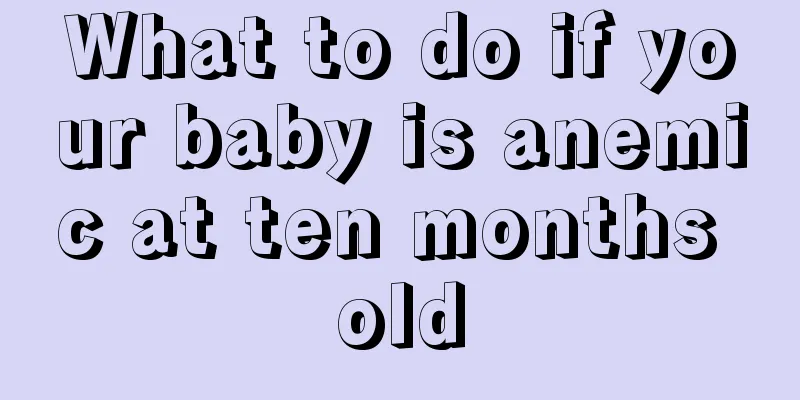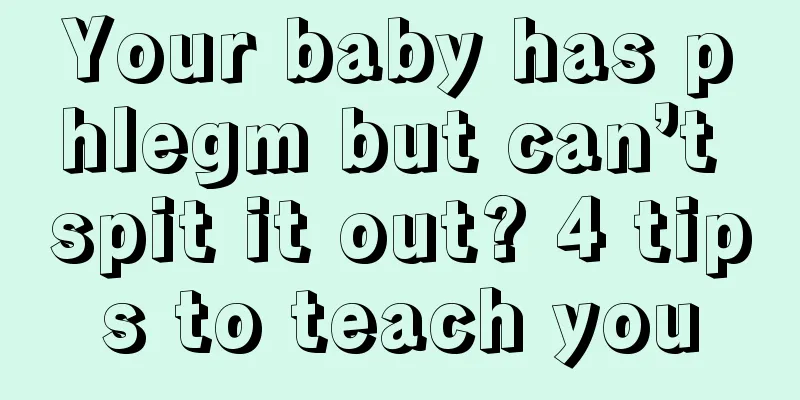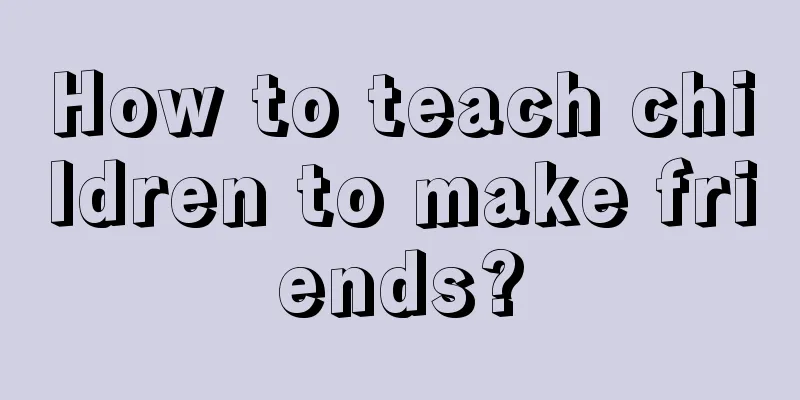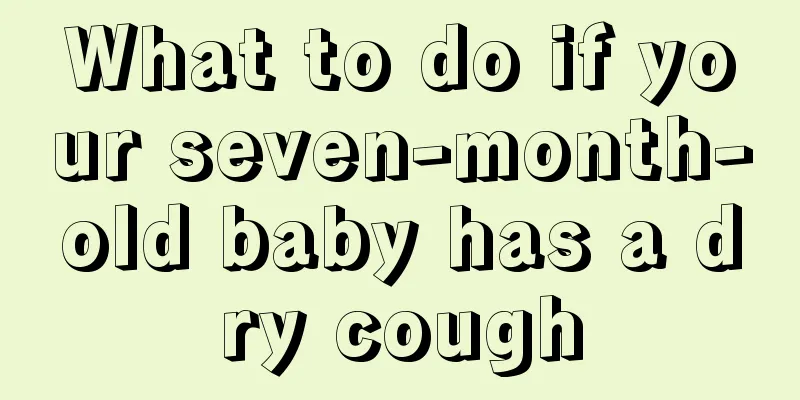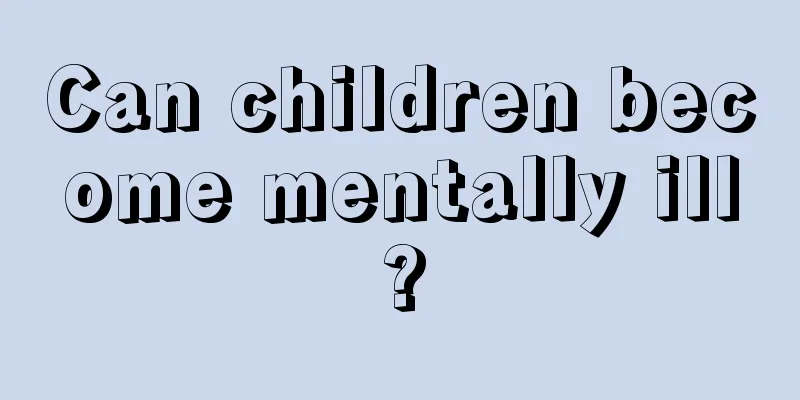Do not confuse wind-cold colds and wind-heat colds in children
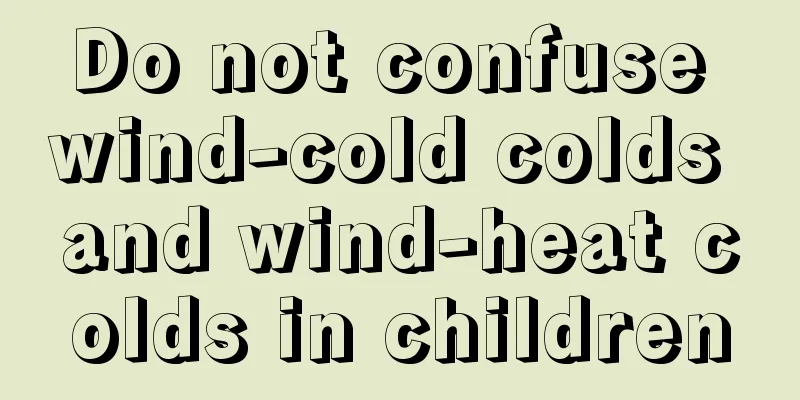
|
In spring, children are more likely to catch colds due to high humidity and unstable temperature. Children's immune system is not as strong as adults', so parents must pay attention to children's colds. It is important not to confuse wind-cold colds and wind-heat colds, otherwise incorrect treatment methods may aggravate the child's condition. The following introduces relevant knowledge about children's wind-cold colds and wind-heat colds. What is a cold? Wind-cold cold: It often occurs in cold seasons, such as winter, late autumn and early spring, and is a disease caused by the cold evil. Symptoms of a cold caused by wind and cold: mild fever, severe chills, no sweating, headache and body aches, clear nasal discharge, cough, no redness or swelling in the throat, pale red tongue, and a floating and tight pulse. Treatment for colds caused by wind and cold: Use pungent and warm methods to relieve the symptoms. Commonly used Chinese patent medicines include Xiaoer Zhibao Pills, etc. What is Fengreganmao? Wind-heat cold: It often occurs in warm seasons, such as spring, early summer and early autumn. It is a disease caused by wind-heat evil spirits. Symptoms of wind-heat cold: severe fever, mild chills, sweating or little sweating, headache and nasal congestion, sore throat, red tongue, and rapid pulse (i.e. fast pulse). Treatment for wind-heat cold: Use spicy and cool herbs to relieve the symptoms. Commonly used Chinese patent medicines include Xiaoer Resusuqing oral liquid, Xiaoer Chiqiao Qingre Granules, Xiaoer Ganmao Granules (oral liquid), etc. The differences between cold and wind-heat in children The simplest and biggest difference between colds caused by wind and heat 1. The easiest way to judge whether it is a cold caused by wind-cold or wind-heat is to look at the color of the sputum. (1) If the sputum is thick and yellow, and there is a runny yellow nasal discharge, it can be preliminarily considered to be a wind-heat type cold. (2) Wind-cold-type colds produce less phlegm and clear nasal discharge, while wind-cold-type coughs produce thin, white phlegm. 2. The biggest difference between a cold caused by wind-cold or wind-heat is (1) Symptoms such as fear of cold and body aches are more obvious in patients with wind-cold. (2) Patients with wind-heat cough up yellow or thick sputum, while patients with wind-cold cough up thin white sputum. (3) Runny nose caused by wind-cold cold is clear, while runny nose caused by wind-heat cold is thicker. (4) Also, look at your tongue coating in the mirror. Wind-cold is a white coating, while wind-heat is a yellow coating. Children's bodies are not fully developed yet. If you use medication indiscriminately due to misjudgment of the type of cold, it is likely to have a great impact on the children's bodies. Therefore, it is important to understand the difference between colds caused by wind and cold and colds caused by wind and heat to avoid harm to children's health due to incorrect medication or treatment. Therefore, parents are reminded to have some common knowledge about wind-cold and wind-heat colds. |
<<: What to do if the back of the baby's head is uneven
>>: Tips to relieve baby's stuffy nose
Recommend
Is it OK for a baby to walk too early?
After people give birth to a child, more attentio...
When is the best time to start early childhood education for children?
The education of children is something that paren...
The child keeps yawning, does it mean he didn't sleep well?
If a child keeps yawning during the day, it means...
What should children with bronchitis, cough and phlegm eat?
The baby's physical constitution is very poor...
Treatment for infants with a body temperature below 36 degrees
Nowadays, infant diseases are rampant and many in...
What should a two-year-old child with constipation eat?
When children are two years old, their parents wi...
What causes children to have eye bags?
Generally speaking, children do not have bags und...
What to do if your child often breaks his nose
A child's broken nose, or nosebleed, is most ...
What to do if your child has enuresis
Nowadays, many children suffer from enuresis due ...
The reason why babies suck their fingers, beware of improper feeding methods!
Many babies suck their fingers. There are many re...
What to do if baby has white spots on his skin
The appearance of white spots on baby's skin ...
The child has frequent urination recently
Frequent urination not only occurs in adults, but...
What are the factors that cause vision loss in children?
Children are the pride of their parents, especial...
What is the cause of the child's dark yellow skin?
Normal babies should be fair and plump, because c...
Symptoms of neonatal vascular disease
Neonatal hemangiomas are very common. There are m...

